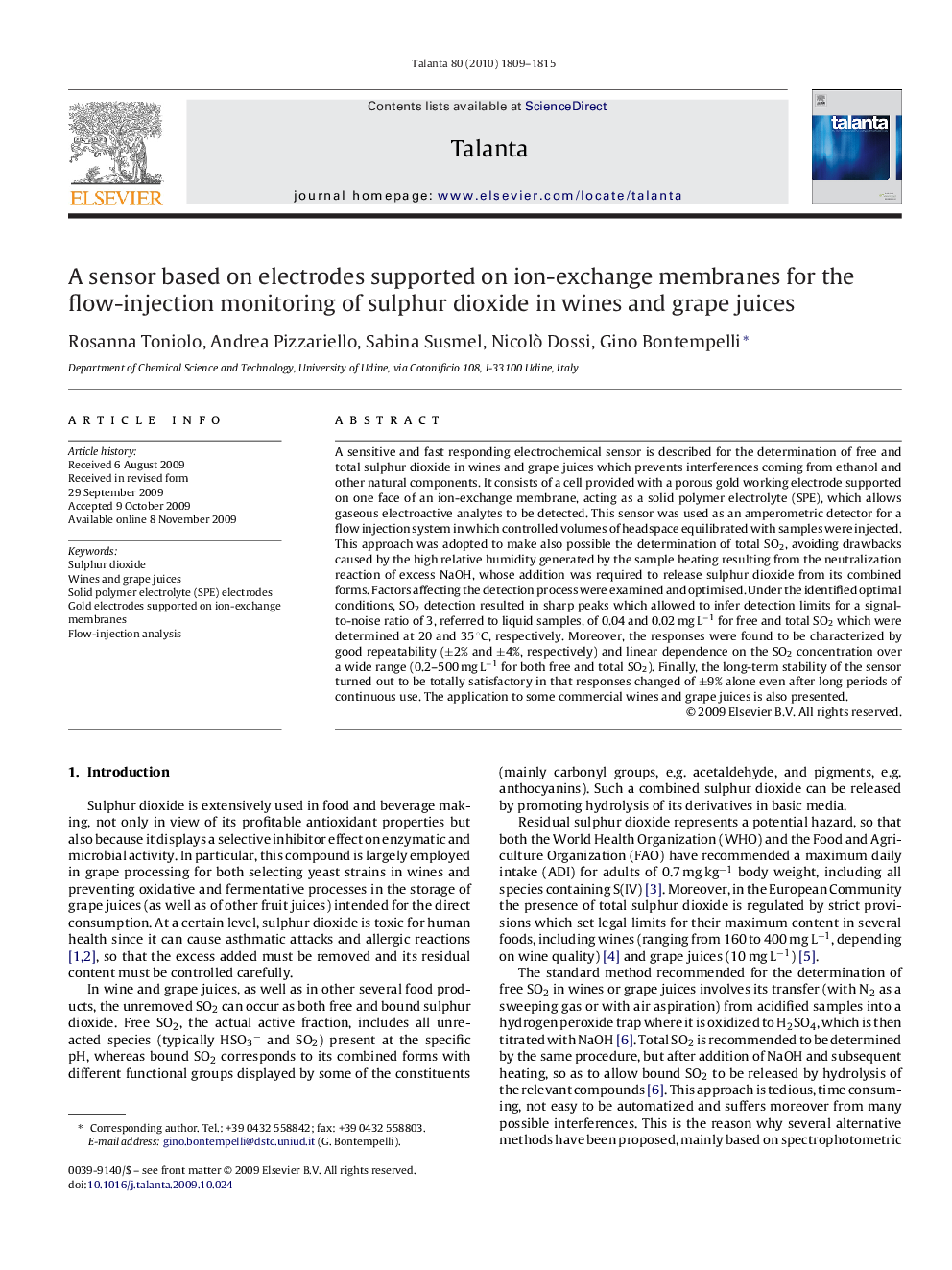| Article ID | Journal | Published Year | Pages | File Type |
|---|---|---|---|---|
| 1242985 | Talanta | 2010 | 7 Pages |
A sensitive and fast responding electrochemical sensor is described for the determination of free and total sulphur dioxide in wines and grape juices which prevents interferences coming from ethanol and other natural components. It consists of a cell provided with a porous gold working electrode supported on one face of an ion-exchange membrane, acting as a solid polymer electrolyte (SPE), which allows gaseous electroactive analytes to be detected. This sensor was used as an amperometric detector for a flow injection system in which controlled volumes of headspace equilibrated with samples were injected. This approach was adopted to make also possible the determination of total SO2, avoiding drawbacks caused by the high relative humidity generated by the sample heating resulting from the neutralization reaction of excess NaOH, whose addition was required to release sulphur dioxide from its combined forms. Factors affecting the detection process were examined and optimised. Under the identified optimal conditions, SO2 detection resulted in sharp peaks which allowed to infer detection limits for a signal-to-noise ratio of 3, referred to liquid samples, of 0.04 and 0.02 mg L−1 for free and total SO2 which were determined at 20 and 35 °C, respectively. Moreover, the responses were found to be characterized by good repeatability (±2% and ±4%, respectively) and linear dependence on the SO2 concentration over a wide range (0.2–500 mg L−1 for both free and total SO2). Finally, the long-term stability of the sensor turned out to be totally satisfactory in that responses changed of ±9% alone even after long periods of continuous use. The application to some commercial wines and grape juices is also presented.
